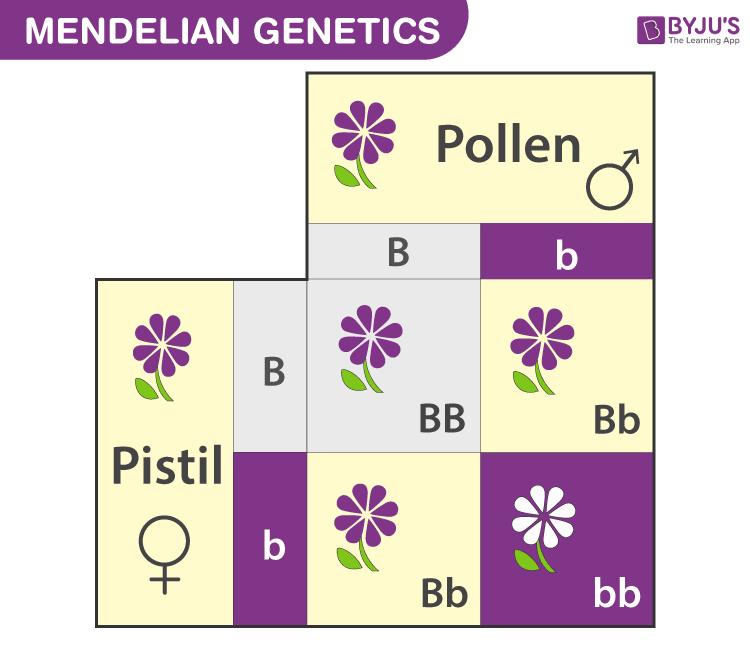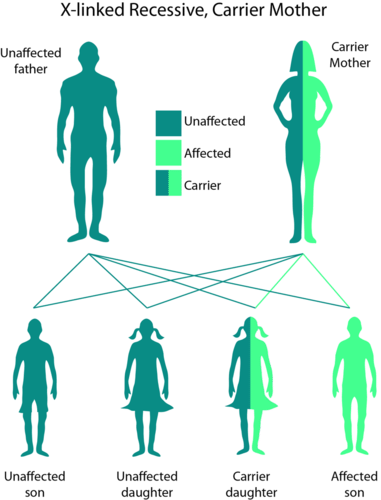Mendelian Inheritance Study Guide
Introduction
The iconic Mendelian laws, which are also known as Mendelian genetics, were proposed by the biologist, mathematician, and meteorologist Gregor Johann Mendel. Though they first came into the light in 1865 and 1866, Mendelian laws are still widely applied and play a vital role in genetics today.
What are Mendelian Genetics?
Mendelian Genetics were formulated by Gregor Mendel and are stated as:
-
The Law of Segregation: Only one copy of the gene from the two present in any organism is further taken forward and distributed to the gamete.
-
The Law of Independent Assortment: Alleles are independently inherited from different genes and only within the sexually reproducing organism.

History of Mendelian Genetics
The history of Mendelian Genetics can be traced back to Mendel’s work on plant hybridization. Mendel conducted several experiments on plants and studied multiple progenies to understand how inhertance worked.
The experimental work by Gregor Mendel was a stepping stone for modern genetics. In the years preceding Mendel’s work, the blending characteristics theory was the dominant theory. At that time, it was believed that parental units blend like colors to produce a new characteristic.
Mendelian Traits
In an inheritance pattern, the Mendelian trait is controlled by only one locus. The locus is a tightly fixed position on the surface of the chromosome where any gene is located. Hence, according to Mendel’s genetic principles, chances are there for the mutation in single genes to cause diseases that are inherited from the same principles. Latent ones are moreover inherited without any notice by hereditary carriers. Some major examples of mendelian patterns of inheritance are cystic fibrosis, sickle cell anemia, and xeroderma pigmentosa.
Mendelian Traits in Humans
Mendelian traits in humans generally revolve around how a child that receives a dominant allele from either parent will display the phenotypic, or visible, manifestation of that trait. Only the offspring who receive two recessive alleles from their parents will take forward the recessive phenotype. In the case of one dominant allele and one recessive one, the dominant form of the trait will have a higher value and will mask the recessive phenotype.
Sex-linked Traits
Sex-linked Traits are associated with the sex chromosomes. These are found on both X and Y chromosomes. The most commonly seen sex-linked traits are on X chromosomes. These are of two types: X-linked dominant and X-linked recessive.
X-linked dominant
-
Those most frequently affected are females.
-
Males and females both have chances to be affected in the same generation.
X-linked recessive
-
Males are majorly affected
-
Every generation has a presence of affected males.
Autosomal Traits
Autosomal traits are controlled by genes located on the 22 autosomes. All 22 chromosomes except X and Y are autosomal traits. These are inherited via simple Mendelian inheritance.
Autosomal dominant
-
Every affected person has a compulsory affected parent.
-
Present in every generation.
Autosomal recessive
-
The parents of the affected person are both carriers.
-
Not generally present in every generation.
Mitochondrial
-
Both males and females can be affected, but only females can pass on.
-
It can be present in every generation.
✅ Conclusion
Mendel came up with genetic discoveries, which included the following outcomes:
-
Characters are discrete and outright.
-
Characteristics have genes that have alternative forms, which are inherited from any one parent. Autosomal and sex-linked traits are controlled by genes.
-
Any of the one alleles dominates the other.
-
The creation of gametes is from random isolation.
-
Genes are completely unlinked and have independent variety.
FAQs
1. What are Mendelian Laws of Inheritance?
The laws which were proposed by Gregor Mendel and were later named the Mendelian Laws of Inheritance are:
-
Law of Segregation.
-
Law of Independent Assortment.
-
Law of Dominance.
2. What is an example of Mendelian inheritance?
Some major examples of Mendelian Inheritance are xeroderma pigmentosum, cystic fibrosis, sickle-cell anemia, Tay-Sachs disease.
3. What are the 3 Mendelian patterns of inheritance?
The main and major patterns which are associated with Mendelian inheritance are autosomal dominant, autosomal recessive, and X-linked. Mendelian patterns generally refer to traits that are observable and have nothing to do with genes.
4. What is meant by Mendelian?
Mendelian refers to the laws which were proposed by Gregor Mendel.
5. What are the basic 4 modes of inheritance?
Modes are referred to as the ways in which any genetic trait is passed on from one generation to the other. There are 4 possible modes for an inheritance, which are as follows:
-
Autosomal Dominant Inheritance
-
Autosomal Recessive Inheritance
-
X-linked Inheritance
-
Complex Inheritance
We hope you enjoyed studying this lesson and learned something cool about Mendelian Inheritance! Join our Discord community to get any questions you may have answered and to engage with other students just like you! Don’t forget to download our App to experience our fun, VR classrooms – we promise, it makes studying much more fun! 😎
]]>

